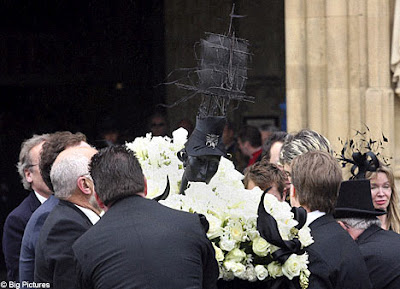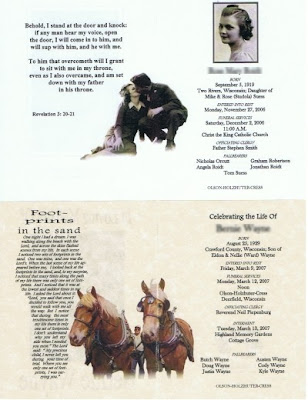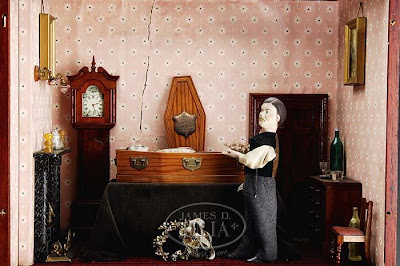Martin Tytell, a man who loved typewriters, died on September 11th, aged 94ANYONE who had dealings with manual typewriters—the past tense, sadly, is necessary—knew that they were not mere machines. Eased heavily from the box, they would sit on the desk with an air of expectancy, like a concert grand once the lid is raised. On older models the keys, metal-rimmed with white inlay, invited the user to play forceful concertos on them, while the silvery type-bars rose and fell chittering and whispering from their beds. Such sounds once filled the offices of the world, and Martin Tytell’s life.Everything about a manual was sensual and tactile, from the careful placing of paper round the platen (which might be plump and soft or hard and dry, and was, Mr Tytell said, a typewriter’s heart) to the clicking whirr of the winding knob, the slight high conferred by a new, wet, Mylar ribbon and the feeding of it, with inkier and inkier fingers, through the twin black guides by the spool. Typewriters asked for effort and energy. They repaid it, on a good day, with the triumphant repeated ping! of the carriage return and the blithe sweep of the lever that inched the paper upwards.Typewriters knew things. Long before the word-processor actually stored information, many writers felt that their Remingtons, or Smith-Coronas, or Adlers contained the sum of their knowledge of eastern Europe, or the plot of their novel. A typewriter was a friend and collaborator whose sickness was catastrophe. To Mr Tytell, their last and most famous doctor and psychiatrist, typewriters also confessed their own histories. A notice on his door offered “Psychoanalysis for your typewriter, whether it’s frustrated, inhibited, schizoid, or what have you,” and he was as good as his word. He could draw from them, after a brief while of blue-eyed peering with screwdriver in hand, when they had left the factory, how they had been treated and with exactly what pressure their owner had hit the keys. He talked to them; and as, in his white coat, he visited the patients that lay in various states of dismemberment on the benches of his chock-full upstairs shop on Fulton Street, in Lower Manhattan, he was sure they chattered back.
A drawer of umlautsHis love affair had begun as a schoolboy, with an Underwood Five. It lay uncovered on a teacher’s desk, curved and sleek, the typebars modestly contained but the chrome lever gleaming. He took it gently apart, as far as he could fillet 3,200 pieces with his pocket tool, and each time attempted to get further. A repair man gave him lessons, until he was in demand all across New York. When he met his wife Pearl later, it was over typewriters. She wanted a Royal for her office; he persuaded her into a Remington, and then marriage. Pearl made another doctorly and expert presence in the shop, hovering behind the overflowing shelves where the convalescents slept in plastic shrouds.Mr Tytell could customise typewriters in all kinds of ways. He re-engineered them for the war-disabled and for railway stations, taking ten cents in the slot. With a nifty solder-gun and his small engraving lathe he could make an American typewriter speak 145 different tongues, from Russian to Homeric Greek. An idle gear, picked up for 45 cents on Canal Street, allowed him to make reverse carriages for right-to-left Arabic and Hebrew. He managed hieroglyphs, musical notation and the first cursive font, for Mamie Eisenhower, who had tired of writing out White House invitations.When his shop closed in 2001, after 65 years of business, it held a stock of 2m pieces of type. Tilde “n”s alone took up a whole shelf. The writer Ian Frazier, visiting once to have his Olympia cured of a flagging “e”, was taken into a dark nest of metal cabinets by torchlight. There he was proudly shown a drawer of umlauts.Mr Tytell felt that he owed to typewriters not only his love and his earnings, but his life. In the second world war his knowledge of them had saved him from deploying with the marines. Instead he spent his war turning Siamese keyboards into 17 other Asian languages, or customising typewriters for future battlegrounds. His work sometimes incidentally informed him of military planning; but he kept quiet, and was rewarded in 1945 with a medal done up on a black, familiar ribbon.Each typewriter was, to him, an individual. Its soul, he reminded Mr Frazier, did not come through a cable in the wall, but lay within. It also had distinguishing marks—that dimple on the platen, that sluggishness in the typebars, that particular wear on the “G”, or the “t”—that would be left, like a fingerprint, on paper. Much of Mr Tytell’s work over the years was to examine typewritten documents for the FBI and the police. Once shown a letter, he could find the culprit machine.It was therefore ironic that his most famous achievement was to build a typewriter at the request of the defence lawyers for Alger Hiss, who was accused in 1948 of spying for the Soviet Union. His lawyers wanted to prove that typewriters could be made exactly alike, in order to frame someone. Mr Tytell spent two years on the job, replicating, down to the merest spot and flaw, the Hiss Woodstock N230099. In effect, he made a perfect clone of it. But it was no help to Hiss’s appeal; for Mr Tytell still could not account for his typewriter’s politics, or its dreams.from The Economist
http://www.economist.com/obituary/displaystory.cfm?story_id=12252747 http://kenichihoshine.com/
http://kenichihoshine.com/










































